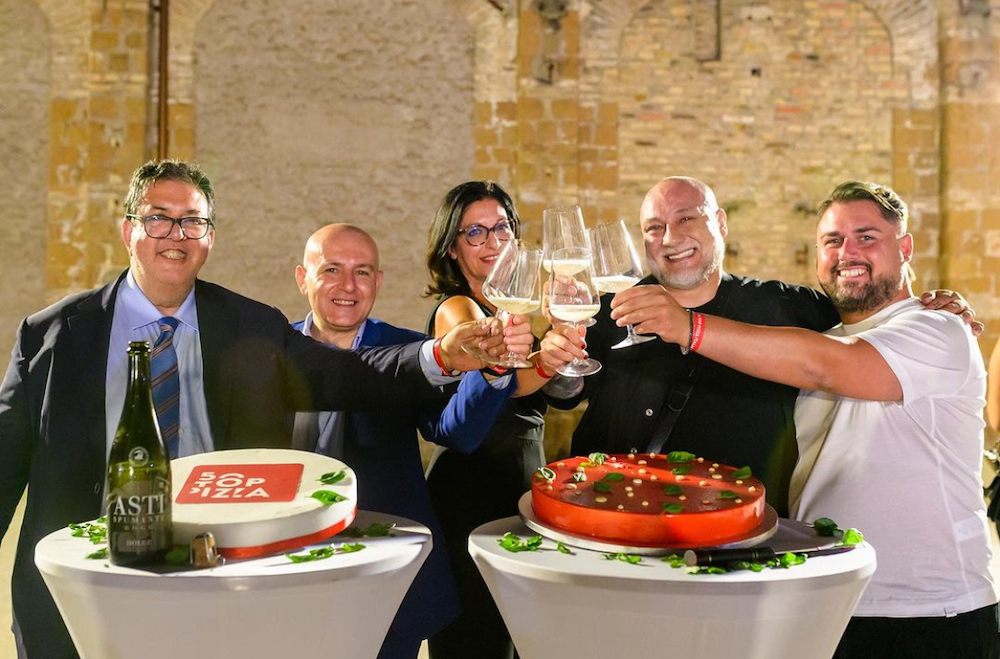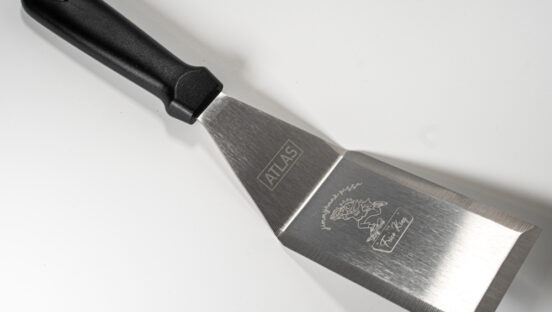By Rick Hynum
There are best-pizza lists galore in the 2020s, but there’s only one 50 Top Pizza guide, released annually by the “pizza inspectors” at 50 Top Italy. The increasingly famous—and prestigious—guide covers Italy and the United States (natch), as well as the remainder of Europe. So if you’re looking for the best pizzerias in Barcelona, Helsinki or Vienna, look no further than this list. And if you’re traveling to the East, 50 Top Pizza will also point you to amazing pizza shops in Tokyo, Bangkok, Beijing and numerous other cities and countries.
How do they do it, and who’s making the call when naming the world’s premier pizza restaurants? We wondered ourselves, so we turned to Albert Sapere, cofounder of 50 Top Pizza, which is an offshoot of the 50 Top Italy guide to the world’s best Italian restaurants. A native of Capaccio in the province of Salerno, Italy, Sapere is a veteran sommelier and master cheese and oil taster. Along with 50 Top Pizza cofounder Barbara Guerra, he also founded the international signature cooking congress, LSDM (Le strade della Mozzarella), the first congress to feature a pizza chef’s presentation on stage.
Sapere says Top 50 Pizza “represents what the NBA is for basketball.” And when the guide comes out each year, it stirs up headlines and plenty of debate. PMQ asked Sapere about the guide’s origin and operation to get a little insight into the process of finding the best pizzerias in the world.
Related: 50 Top Pizza’s best pizzerias in the world for 2023
PMQ: Can you tell us the story of how 50 Top Italy and 50 Top Pizza began? How did it get started?
Albert Sapere: 50 Top Pizza began in 2014 as an idea that my colleagues Barbara Guerra, Luciano Pignataro and I came up with out of our desire to bring considerable attention to the world of pizzerias. The first guide came out in 2017 because it took over two years to find the resources and collaborators necessary for the inspections. Compared to those first years, it has grown immensely. At first it was an Italian guide with an international selection. Today it is a bonafide worldwide guide with more than 2,000 venues in the guide encompassing both independent pizzerias and artisan chains. We consider the artisan chains to be pizzerias under the same brand name with at least five locations.
PMQ: Can you give us an idea of how the process of creating your list of the 50 best pizzerias works? Who are the inspectors, and how do they choose which pizzerias to visit?
Sapere: With a very simple and direct system: We first carry out a large survey, which is organized by geographical area. In the specific case of the United States, after the survey, we proceed with our anonymous visits by simple paying customers. For the U.S. guide, all of the inspectors are based in the USA, and they’re of different nationalities and have different perspectives. We did this in order to better represent the pizza world that operates under the banner of the stars and stripes.
PMQ: You seem to cover the pizza scene on the entire planet. Do you have a different team for each country?
Sapere: We have a central editorial staff for each continent, so one for the Asia-Pacific area, one in Latin America, one in the USA, one in Europe, and one in Italy.
Related: Italian pizza guide says this is the best pizzeria in the U.S.
PMQ: What type of criteria do you use to compile the final lists?
Sapere: The assessment of each pizzeria is comprehensive, so not only the pizza, but also the available beverages (wines, beer, etc.), the service and the hospitality, which, in the modern pizza world, make the difference.
PMQ: When you evaluate the American pizzerias, what impresses you the most? What are they doing well?
Sapere: In terms of consumption of pizza, it is the largest and most important market in the world. We find everything out there: excellent quality and things that are less impressive in terms of quality. But that is to be expected in a market that consumes so much product.
PMQ: In your travels outside of Italy and the United States, which country has surprised you the most with its impressive pizza scene? Are there any countries to keep an eye on in terms of amazing pizza?
Sapere: At the moment, pizza is the most consumed food product in the world and so, as expected, there is quite a bit of frenzy and excitement around it. Italy and the United States both deeply love this dish, but also Brazil. For example, beyond the Neapolitan tradition, a “paulista” style has been created there. I would also keep tabs on Spain and Japan, who have always loved pizza.













